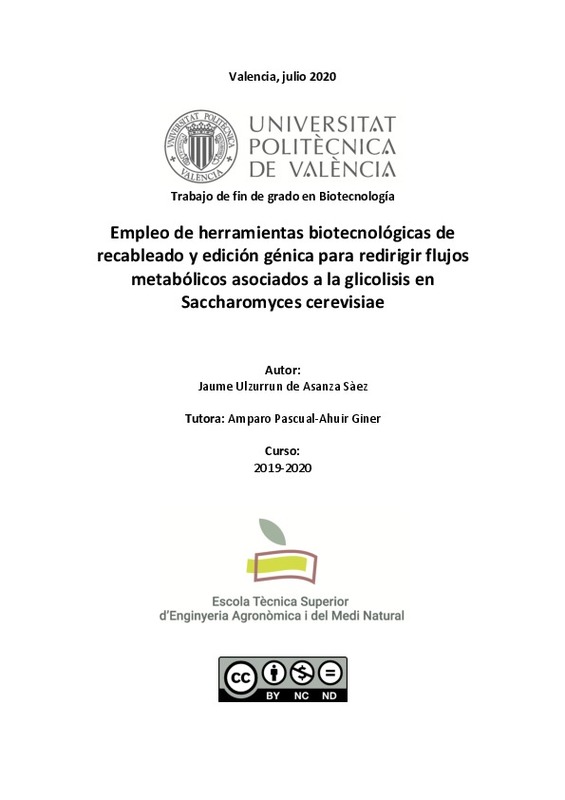JavaScript is disabled for your browser. Some features of this site may not work without it.
Buscar en RiuNet
Listar
Mi cuenta
Estadísticas
Ayuda RiuNet
Admin. UPV
Empleo de herramientas biotecnológicas de recableado y edición génica para redirigir flujos metabólicos asociados a la glicolisis en Saccharomyces cerevisiae
Mostrar el registro completo del ítem
Ulzurrun De Asanza Sáez, J. (2020). Empleo de herramientas biotecnológicas de recableado y edición génica para redirigir flujos metabólicos asociados a la glicolisis en Saccharomyces cerevisiae. http://hdl.handle.net/10251/151127
Por favor, use este identificador para citar o enlazar este ítem: http://hdl.handle.net/10251/151127
Ficheros en el ítem
Metadatos del ítem
| Título: | Empleo de herramientas biotecnológicas de recableado y edición génica para redirigir flujos metabólicos asociados a la glicolisis en Saccharomyces cerevisiae | |||
| Autor: | Ulzurrun de Asanza Sáez, Jaume | |||
| Director(es): | Proft, Markus Hans | |||
| Entidad UPV: |
|
|||
| Fecha acto/lectura: |
|
|||
| Resumen: |
[ES] La manipulación dirigida de flujos metabólicos es de gran interés biotecnológico, sobre todo por el empleo industrial de microrganismos como factorías de productos de gran impacto económico; y permite la obtención de ...[+]
[EN] The directed manipulation of metabolic flows is of great biotechnological interest, mainly due to the industrial use of microorganisms as factories of products of significant economic impact; and it allows obtaining ...[+]
|
|||
| Palabras clave: |
|
|||
| Derechos de uso: | Reconocimiento - No comercial - Sin obra derivada (by-nc-nd) | |||
| Editorial: |
|
|||
| Titulación: |
|
|||
| Tipo: |
|
recommendations
Este ítem aparece en la(s) siguiente(s) colección(ones)
-
ETSIAMN - Trabajos académicos [3555]
Escuela Técnica Superior de Ingeniería Agronómica y del Medio Natural







